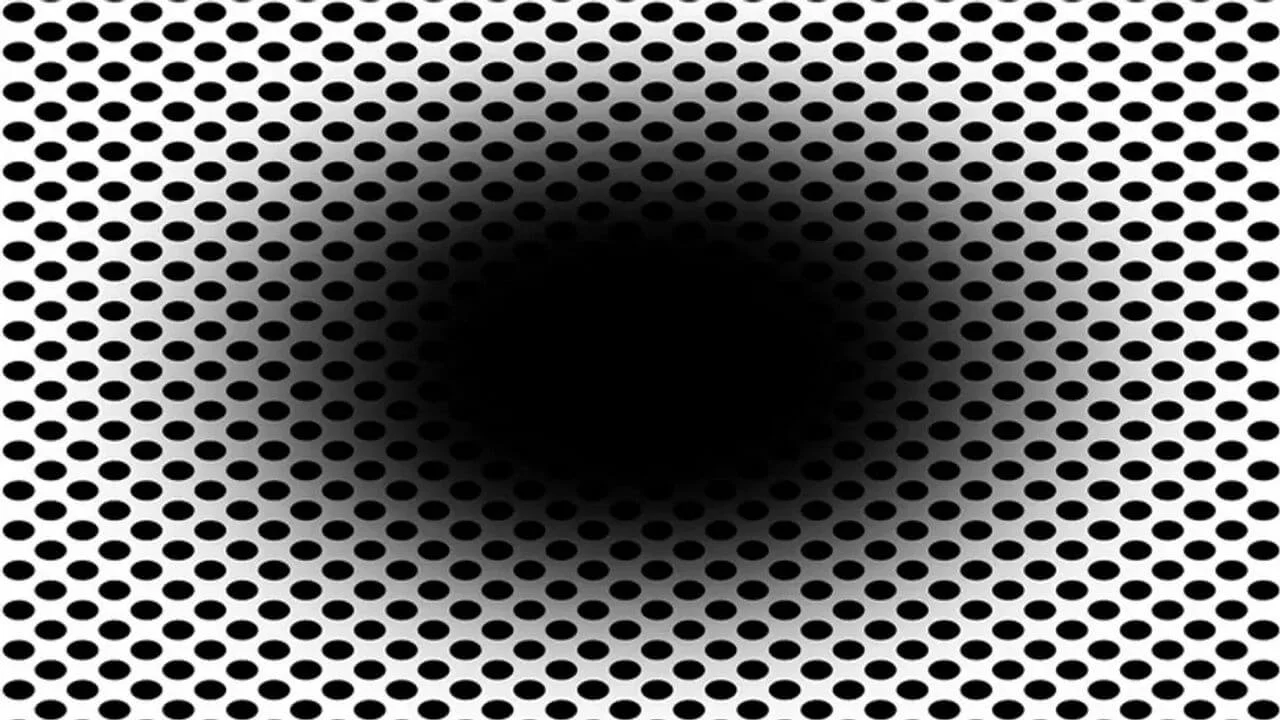Why the Expanding Hole Illusion Tricks the Brain
A strange optical illusion makes people see a black hole grow larger, but not everyone experiences it the same way. Scientists are still puzzled.

Psychologists have been investigating a powerful optical effect known as the “expanding hole” illusion. This visual trick appears so real that it can influence the brain’s automatic reflexes. Curiously, about 80 percent of people experience the illusion, while others see nothing unusual. Researchers are not yet sure why such a difference exists.
How the Illusion Works
The image is simple: a white background with scattered black dots surrounding a hazy black spot at the center. When someone stares at the central dark area, many report that it seems to expand outward like a growing tunnel.
Scientists from the University of Oslo found that this illusion is convincing enough to cause physical changes in the eye. When viewers perceive the black hole as expanding, their pupils dilate as if they were entering a dark space. In contrast, when the central hole is shown in bright colors, pupils constrict, mimicking the reaction to light.
Dr. Bruno Laeng, professor of psychology and lead author of the study, explained that the expanding hole gives the strong impression of movement, as if a person were heading into a tunnel.
Measuring the Effect
In their study, the researchers presented the image to 50 participants with normal vision. Each person rated how strongly they experienced the illusion while their eye movements and pupil responses were recorded.
The results showed wide variation. Fourteen percent of participants did not see any expansion in the black hole version, and about 20 percent were uncertain when viewing the colored version. Those who perceived the illusion most strongly also showed the greatest changes in pupil size. By contrast, people who saw no illusion exhibited no pupil change at all.
What This Reveals About Perception
The findings suggest that our eyes do not respond solely to real changes in light. Instead, the pupil reflex can be guided by how the brain interprets or even imagines the environment. In other words, what we perceive can be just as influential as what we physically see.
Dr. Laeng emphasized that pupil responses are not simple mechanical reactions to light but are shaped by perception and imagination. This opens the possibility that other bodily responses could also be influenced by illusions, offering new ways to study how the brain processes visual information.
The study was published in Frontiers in Human Neuroscience.
This article has been fact checked for accuracy, with information verified against reputable sources. Learn more about us and our editorial process.
Last reviewed on .
Article history
- Latest version
- Last updated by Dayyal Dungrela, MLT, BSc, BS
- Peer reviewed by Dr. Shreya Choudhury, PhD
Reference(s)
- Laeng, Bruno., et al. “The Eye Pupil Adjusts to Illusorily Expanding Holes.” Frontiers in Human Neuroscience, vol. 16, 2022, doi: 10.3389/fnhum.2022.877249. <https://www.frontiersin.org/journals/human-neuroscience/articles/10.3389/fnhum.2022.877249>.
Cite this page:
- Posted by Jessica Martin